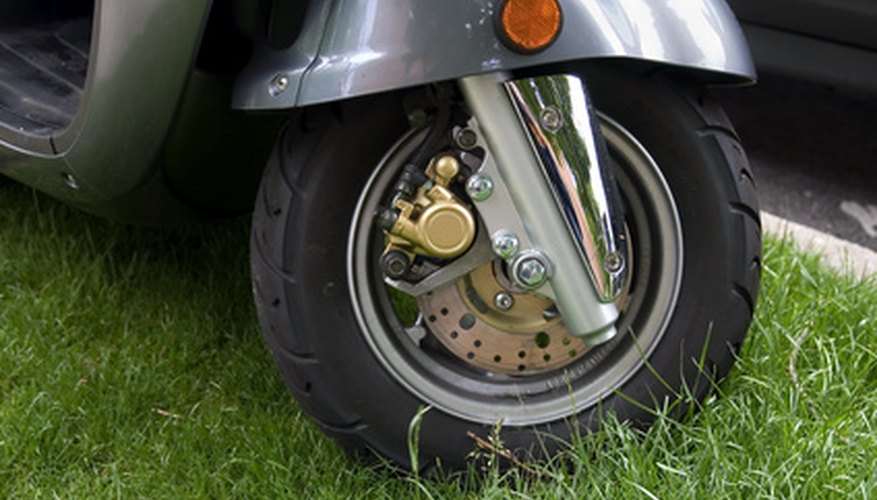Scooter problems can be grouped into three types: your scooter won't start, it won't stay running or it lacks adequate pickup. Depending upon the problem that plagues your scooter, you can troubleshoot a number of mechanical components before taking your scooter to a mechanic. Troubleshooting a Honda Lead scooter is an important process that most scooter owners can perform.
Check to see if the Honda Lead has gas. Fill the tank if it doesn't.
Flip the kill switch to "On." Kill switches are a master fuse which, when switched to "Off," make it impossible to start the scooter.
- Scooter problems can be grouped into three types: your scooter won't start, it won't stay running or it lacks adequate pickup.
- Kill switches are a master fuse which, when switched to "Off," make it impossible to start the scooter.
Tighten the spark plug on your engine. Operation sometimes loosens spark plugs, which prevents a scooter from starting. The spark plug is located on the top of the engine.
Evacuate the air filter. Remove the black plastic air intake case to access the air filter. The case is located on the rear left of the scooter by unscrewing the two bolts attaching it to the top of the transmission case and the single bolt securing it to the underside of the rear wheel well. Unscrew and clean the air filter. Replace it if necessary.
- Tighten the spark plug on your engine.
- Remove the black plastic air intake case to access the air filter.
Shine a flashlight into your gas tank. If you see small condensation bubbles at the bottom of the tank, you have water in your fuel. Siphon the tank with a mechanical tank siphon pump.
Tighten the spark plug.
Disconnect the kill switch. Sometimes kill switches can malfunction or short circuit. Open up the panelling on the handlebars with a socket wrench and snip the two wires that connect to the back of the switch. Splice the two wires together to bypass the switch.
- Shine a flashlight into your gas tank.
- Splice the two wires together to bypass the switch.
Check the tire pressure on the rear tire of your Honda Lead with a tire gauge. It should read about 29 psi. Fill the tire to the correct psi.
Replace the drive belt in the transmission box on the side of the scooter. Open the box up by unscrewing the six bolts that hold its lid on, then unscrew and remove the two gear wheels with an impact wrench. A loose belt sags in the middle, causing a drop in the amount of energy transferred from the engine to the rear tire.
Clear out the exhaust pipe's packing material. The bolts holding the faceplate of the exhaust pipe are readily accessible on the outside of the pipe. The packing material can be pulled out and replaced by hand. Purchase packing materials at scooter dealerships.
- Check the tire pressure on the rear tire of your Honda Lead with a tire gauge.
- The bolts holding the faceplate of the exhaust pipe are readily accessible on the outside of the pipe.
